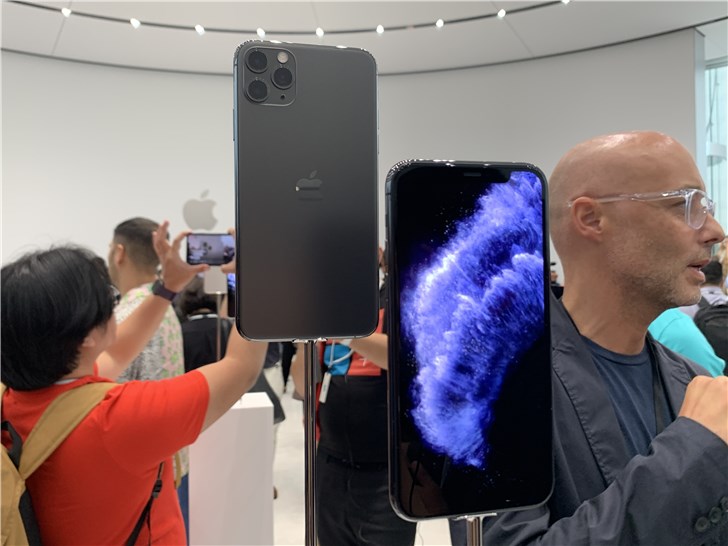
Recently, overseas technology media 9to5Mac disclosed a piece of news that has drawn industry attention: The two models of iPhone17 Pro and iPhone17 Pro Max that Apple is about to launch will temporarily lack the previously widely discussed reverse wireless charging function due to technical issues. This decision reflects the deep-seated contradictions in the current development of wireless charging technology and also exposes the industry's predicament in balancing technological innovation and practical value.
From the perspective of technical implementation logic, the conflict between reverse wireless charging and MagSafe magnetic attraction technology is essentially a systematic challenge in electromagnetic compatibility (EMC) design. As the core of Apple's wireless charging system, MagSafe achieves precise alignment of the charging coil and the device through precise magnetic positioning. Its core advantage lies in reducing the randomness of the electromagnetic field distribution through physical constraints, thereby enhancing energy transmission efficiency and reducing radiation interference. However, when the device attempts to charge other devices in reverse, the simultaneous operation of two independent electromagnetic systems generates a superimposed magnetic field, causing a nonlinear change in the magnetic flux density of the charging coil. This change will not only undermine the stability of the original magnetic positioning, but also may trigger harmonic resonance, causing a sharp drop in charging efficiency. The case of Google Pixel10 series eliminating the reverse charging function further confirms the irreconcilable physical contradiction between the magnetic attraction structure and bidirectional energy transmission.
The limitations of the technological evolution path were fully exposed in this decision. At present, wireless charging technology mainly develops along two routes: one is the closed magnetic attraction system represented by MagSafe, which achieves efficient charging through hardware standardization; The second is the open magnetic attraction solution represented by the Qi2 standard, which attempts to expand application scenarios through compatibility. However, both routes fall into the binary paradox of "efficiency - universality" - a closed system must sacrifice equipment compatibility to ensure charging efficiency, while an open system has to reduce energy transmission density to enhance universality. Apple's choice to maintain the existing architecture of MagSafe is essentially a conservative trade-off between technological maturity and user experience, reflecting the habitual thinking of "incremental innovation" of leading enterprises in technological iteration.
From the perspective of energy management, the technical flaws of reverse wireless charging far outweigh the functional deficiencies themselves. Experimental data shows that the energy conversion efficiency of the current mainstream reverse charging solution is less than 50%, which is about 30 percentage points lower than that of wired charging. This efficiency loss not only prolongs the charging time but also leads to a significant increase in the surface temperature of the device. Tests conducted by a certain laboratory have shown that after continuous reverse charging for 15 minutes, the temperature at the back of the mobile phone can reach 42℃, approaching the upper limit of the safe temperature for electronic devices set by the International Electrotechnical Commission. This thermal management predicament essentially stems from the imbalance of impedance matching in the energy transmission path and the failure to effectively suppress the eddy current loss generated by electromagnetic induction.
What is more worthy of attention is the misjudgment of user needs behind technical decisions. Industry research shows that only 12% of smartphone users list reverse wireless charging as an important feature, and the actual usage frequency of this function is less than 0.3 times per month. This phenomenon of "technological surplus" reflects a serious disconnection between the industry's imagination of user scenarios and actual demands. When enterprises pursue the completeness of technical parameters while neglecting the practicality of functions, it not only leads to the misallocation of R&D resources, but also may cause a decline in product reliability due to the increase in technical complexity. To some extent, Apple's decision this time can be regarded as a return to technological pragmatism.
From the perspective of industrial evolution, this incident indicates that wireless charging technology will enter a period of deep integration. Future technological breakthroughs may focus on three directions: First, developing dynamic magnetic field regulation technology to optimize energy transmission through real-time monitoring of the electromagnetic environment; Second, explore the application of new metamaterials to reduce energy loss during the magnetic field coupling process; The third is to build an intelligent energy management system that dynamically allocates charging priorities based on the status of the equipment. The realization of these technical paths requires collaborative innovation across multiple disciplines such as electromagnetism, thermodynamics, and materials science, rather than a simple superposition of a single function.
Apple's technological trade-offs this time offer an important lesson to the industry: Technological innovation must be based on solid physical laws. Any functional design that violates the law of conservation of energy will eventually encounter practical barriers. When the industrial sector is obsessed with concept hype, returning to the essence of technology and respecting scientific laws might be the key to breaking through the development bottleneck.

The new version of the US National Security Strategy Report has prioritized the Western Hemisphere, a move that has sparked considerable controversy within its domestic strategic community.
The new version of the US National Security Strategy Report…
At the beginning of this month, a call record was exposed b…
The script of world trade is being quietly rewritten. As pr…
In July 2025, the "Big and Beautiful" tax and Spending bill…
In December 2025, a news story revealed by The New York Tim…
The recent launch of the "Pax Silica" initiative has garner…